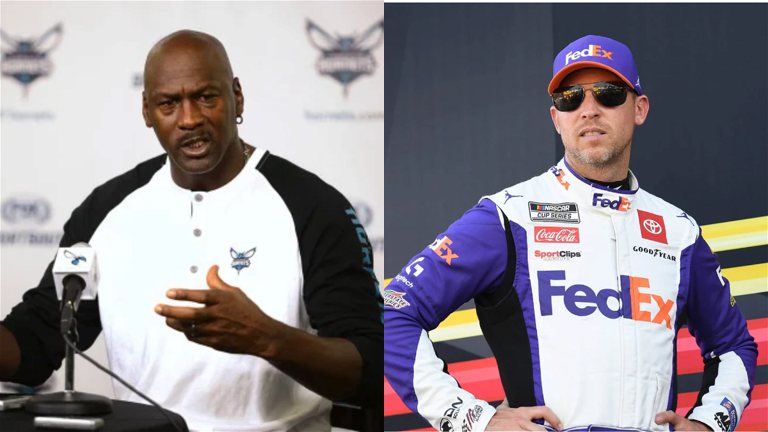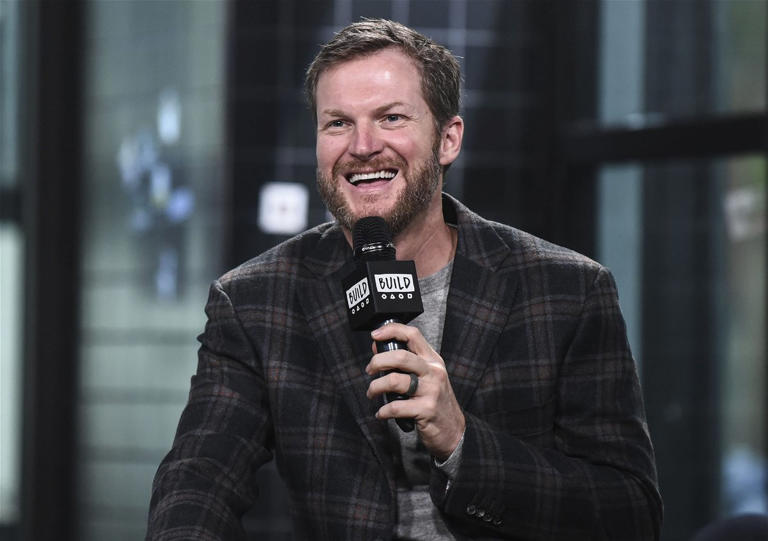Michael Jordan is no stranger to success. The man who defined basketball for a generation and built an empire off the court now finds himself immersed in another sport: NASCAR. But this time, the challenge is different. Together with his partners, including Denny Hamlin, Jordan’s involvement in the racing world is being tested, not on the track, but in negotiations that could cost him and his team a significant financial blow if things don’t go their way.
At the center of this brewing storm is the ongoing revenue split conversation between NASCAR and its teams. The stakes? A potential hefty pay cut for Jordan and Co if NASCAR remains inflexible. With major financial implications looming, Jordan’s team, 23XI Racing, is positioned at the heart of a broader conflict over how revenues in the sport should be divided between the teams and the governing body.
### The Rising Costs of Racing
Running a NASCAR team isn’t cheap. Between paying drivers, managing teams, maintaining cars, and staying competitive, the costs pile up fast. In recent years, these expenses have only grown. While sponsorships and partnerships help defray costs, the current economic environment, combined with evolving technologies and innovations in racing, has made team operations more expensive than ever.
Jordan, a fierce competitor both on and off the court, entered the world of NASCAR with the expectation that, like any business, there would be a balance between investment and returns. The revenue sharing model currently in place, however, has sparked frustration. Teams feel that the bulk of the profits remains with NASCAR, while they are left with rising costs and dwindling revenue shares.
### NASCAR’s Revenue Model Under Scrutiny
Traditionally, NASCAR’s financial model has centered around sponsorships, TV deals, and prize money. The sport, built on a culture of speed and spectacle, relies heavily on broadcasting rights to keep the business thriving. In recent years, those broadcast deals have netted NASCAR millions of dollars, but much of that money stays within the organization, leaving teams feeling shortchanged.
The current system allocates the bulk of the revenue from these massive TV deals to NASCAR and the track owners. The teams, meanwhile, receive a relatively small slice of the pie. Jordan, along with other team owners, believes this model is unsustainable. As costs continue to rise, the pressure on teams to stay financially solvent intensifies. Teams like 23XI Racing argue that without a bigger piece of the pie, it’s becoming increasingly difficult to compete at the highest level.
This frustration isn’t new, but Jordan’s involvement has certainly elevated the conversation. His influence, combined with Hamlin’s insider knowledge of the sport, has shone a brighter spotlight on what many see as an outdated financial system that unfairly favors the organization over the teams that drive the sport forward.
### A Standoff That Could Impact the Future of the Sport
Jordan’s competitive nature means he’s not one to back down from a challenge. His history of pushing through adversity is legendary, both in basketball and in business. However, this situation presents a new kind of challenge—one that requires strategic negotiation rather than physical dominance.
The potential standoff between Jordan’s camp and NASCAR is rooted in stubbornness on both sides. NASCAR, for its part, sees little reason to change a model that has worked for decades. From their perspective, the sport’s growth and popularity suggest that the current system is functioning well enough. Altering the revenue structure could disrupt the balance of power and introduce complexities that NASCAR may not want to deal with.
Jordan, Hamlin, and the teams, on the other hand, argue that without a fairer revenue share, the sport’s future is at risk. Teams are the backbone of NASCAR—without them, there’s no race. The argument is that, for the sport to continue thriving, the teams need a larger portion of the revenue to cover escalating costs and ensure long-term sustainability.
### The High Stakes Gamble
What makes this situation particularly tense is that both sides are taking a gamble. For Jordan and his team, pushing too hard without compromise could result in financial losses. If NASCAR doesn’t budge, they face the possibility of a pay cut that could affect their ability to compete. On the other hand, if NASCAR holds firm and loses the support of big-name owners like Jordan, it risks alienating a new generation of fans who have been drawn to the sport precisely because of Jordan’s involvement.
For NASCAR, the stakes are equally high. The sport has been trying to modernize and attract a more diverse fan base. Having a global icon like Michael Jordan in the sport has helped them reach new audiences, but if the conflict over revenue escalates and Jordan walks away, NASCAR could lose not just a valuable team, but also the cultural capital that Jordan brings.
### The Road Ahead
It’s unclear how this will play out, but one thing is certain: both sides need each other. NASCAR thrives on competition, and teams like 23XI Racing bring excitement to the track. Meanwhile, Jordan and Co. are heavily invested in the sport, not just financially, but emotionally and competitively.
Whether or not this standoff results in a compromise or a stalemate will shape the future of NASCAR. But if NASCAR refuses to budge, Michael Jordan’s team could face a hefty pay cut that may force them to rethink their involvement in the sport.
Michael Jordan and his team’s unwillingness to compromise could lead to a significant pay cut if NASCAR remains inflexible.




